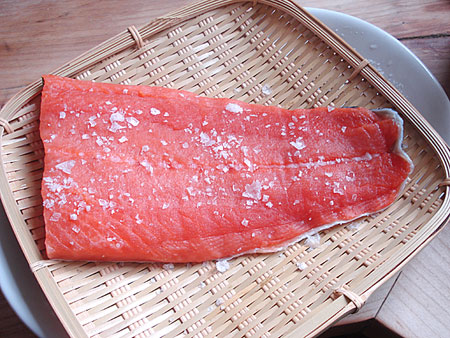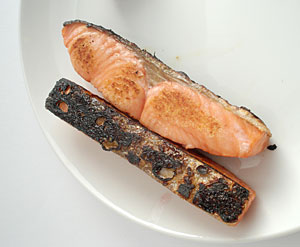
Salted salmon, called shiozake or shiojake (塩鮭), is so ubiquitous in Japan that when people just talk about "salmon" (sake or shake) they are usually referring to the salted kind rather than the raw kind (which is specifically called namazake(生鮭)). Salted salmon is a staple ingredient of bento, used as an onigiri rice ball filling, flaked on top of or mixed into rice, or just grilled.
 Salted salmon is cheap and easily available in Japan, but not so outside of Japan. So I've been making it myself for some time now, and it's quite easy. All you need is a typical refrigerator that has low humidity. (If yours doesn't have excess condensation in it, and old leafy vegetables get dessicated in the corner of your vegetable bin, then it's ideal.)
Salted salmon is cheap and easily available in Japan, but not so outside of Japan. So I've been making it myself for some time now, and it's quite easy. All you need is a typical refrigerator that has low humidity. (If yours doesn't have excess condensation in it, and old leafy vegetables get dessicated in the corner of your vegetable bin, then it's ideal.)